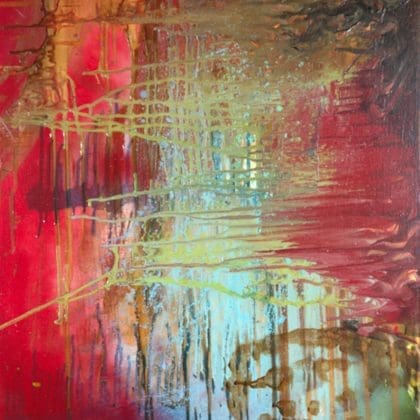As a collector, your home is more than just a place to live—it’s a canvas waiting to showcase your unique art collection. The way you incorporate art into your living spaces can transform the atmosphere of your home, making each room feel personal, vibrant, and alive with creativity. Whether you’re just starting to acquire pieces or already have a collection you’re proud of, finding the right way to display art can sometimes feel daunting.
In this article, we’ll explore some practical and inspiring ways to integrate art into your home’s spaces, creating a cohesive and meaningful display throughout your living areas. Let’s dive into how you can bring your collection to life.
1. Match Art with the Purpose of Each Room
The art you choose should reflect the energy and purpose of each room in your home. Thoughtfully selecting pieces that align with how you use a space will not only enhance the room’s function but also make it more enjoyable to be in.
Living Room:
Bold Statement Pieces: The living room is often the central hub of the home, so it’s the perfect place to display large, eye-catching artwork that sets the tone for the rest of your collection.
Conversation Starters: Choose art that sparks curiosity and invites conversation, such as abstract works, cultural pieces, or anything with a strong narrative.
Home Office:
Inspirational Pieces: Surround yourself with art that motivates creativity and focus. Photography, quotes, or minimalist designs can keep your mind clear and inspired.
Serenity for Focus: Calming colors and nature scenes can help create a peaceful, distraction-free environment.
Bedroom:
Serene and Soothing Art: Opt for soft tones and peaceful imagery in your bedroom to create a tranquil space. Consider landscapes, abstract watercolors, or photography that promotes relaxation.
Personal and Intimate: The bedroom is a great place for more personal works—whether they’re from your favorite artist or sentimental pieces you’ve acquired over the years.
2. Create a Focal Point in Each Space
When integrating art into your home, think about creating a focal point in each room. A well-placed piece of art can instantly draw attention and set the mood for the space.
Ways to create focal points:
Over the Sofa: A large canvas or framed piece above the sofa can act as the centerpiece of the living room, pulling together the decor and furniture.
Above the Bed: In the bedroom, placing a calming piece of art above the bed can create a focal point that’s both relaxing and elegant.
Hallway Statements: Don’t overlook hallways! A long corridor can be the perfect place to create a gallery-style focal point, showcasing multiple pieces in a linear arrangement.
Pro Tip: For rooms with higher ceilings, consider vertically oriented art to draw the eye upward, enhancing the sense of space.
3. Mix and Match Styles for a Curated Look
Don’t feel confined to one particular style or medium when displaying your art. Mixing and matching different styles and media can create a visually interesting and layered look.
Here are a few ways to mix things up:
Combine Different Mediums: Pair paintings with photography, sculpture, or even textile art. This adds depth and variety to your display, making your collection feel dynamic.
Play with Frames: Mixing frame styles—like modern black frames with vintage wooden ones—can give your display an eclectic, curated feel.
Blend Contemporary with Classic: Don’t be afraid to juxtapose modern pieces with more traditional works. The contrast can make both pieces stand out in unexpected ways.
Example: Hang a modern abstract painting next to a classic landscape in a shared space, like the dining room, for an interesting contrast that blends eras and styles.
4. Use Art to Create Zones in Open Spaces
If you have an open-concept floor plan, art can help create “zones” within your space, making large areas feel more intimate and defined.
How to use art to create zones:
Dining Areas: Use a bold, oversized piece above your dining table to create a distinct eating zone within a larger living space.
Reading Nooks: A cozy corner can become a designated reading area with the addition of a small piece of art that feels peaceful and reflective.
Entryways: Define your home’s entryway with a statement piece that immediately sets the tone for the rest of the house.
Pro Tip: When defining zones, use lighting to complement the art. For example, pendant lighting above the dining table can illuminate a painting, making the space feel cohesive.
5. Incorporate Art into Unexpected Spaces
Art doesn’t just belong in the living room or bedroom—get creative with where you hang your collection! Think about less traditional spaces that could use a touch of personality.
Surprising places to hang art:
Bathrooms: A well-chosen piece in the bathroom can add sophistication or playfulness to a small, often overlooked space. Consider moisture-resistant materials like prints on aluminum or framed pieces with glass protection.
Kitchens: The kitchen is another great place to display small, vibrant pieces that bring warmth and energy to the room. Think food-themed art, prints, or fun, whimsical pieces that create a welcoming atmosphere.
Staircases: The space along your staircase is a perfect canvas for an art gallery. Arrange multiple works vertically as you ascend, creating a visual journey.
Pro Tip: Consider art that complements the mood or function of these spaces—like playful illustrations in the kitchen or abstract pieces in the bathroom.
6. Curate Mini-Galleries for Intimate Corners
Every home has those small nooks or walls that seem a bit empty but don’t quite call for a large piece of art. These areas are perfect for creating mini-galleries that invite closer inspection.
Ideas for mini-galleries:
Small Frames in Groupings: Group together smaller pieces or prints in matching frames for a cohesive but impactful mini-gallery. Play with different arrangements, like grids or salon-style hanging.
Shelf Art: If you have a narrow shelf or mantel, place a collection of framed works, sculptures, or ceramics, creating an ever-changing display without needing to nail anything into the walls.
Corners and Alcoves: Turn an empty corner into a feature by placing a single sculpture or a tall, narrow piece of art to make the space feel intentional.
Pro Tip: Use varying frame sizes to add texture and depth to your mini-gallery for a more visually engaging display.
Conclusion: Make Art a Central Part of Your Living Space
Integrating art into your home isn’t just about decorating—it’s about creating spaces that feel alive, thoughtful, and reflective of your personal style. By matching art to the purpose of each room, creating focal points, and exploring unexpected spaces, you can transform your collection into a living, breathing part of your home.
Now it’s your turn: Take a walk through your home and consider where you could integrate art more thoughtfully. Whether it’s refreshing your living room with a bold statement piece or bringing art into your kitchen or bathroom, you can create spaces that truly reflect your personality and taste. Get creative and don’t be afraid to experiment with new ideas. Your art deserves to be seen and enjoyed!




